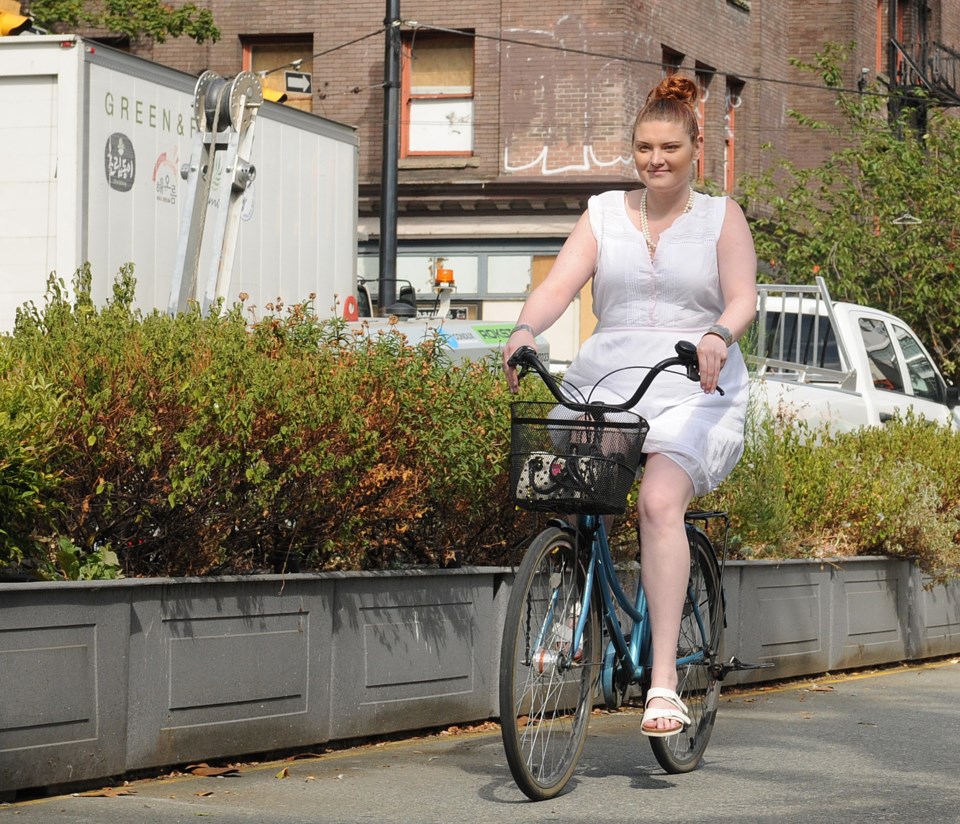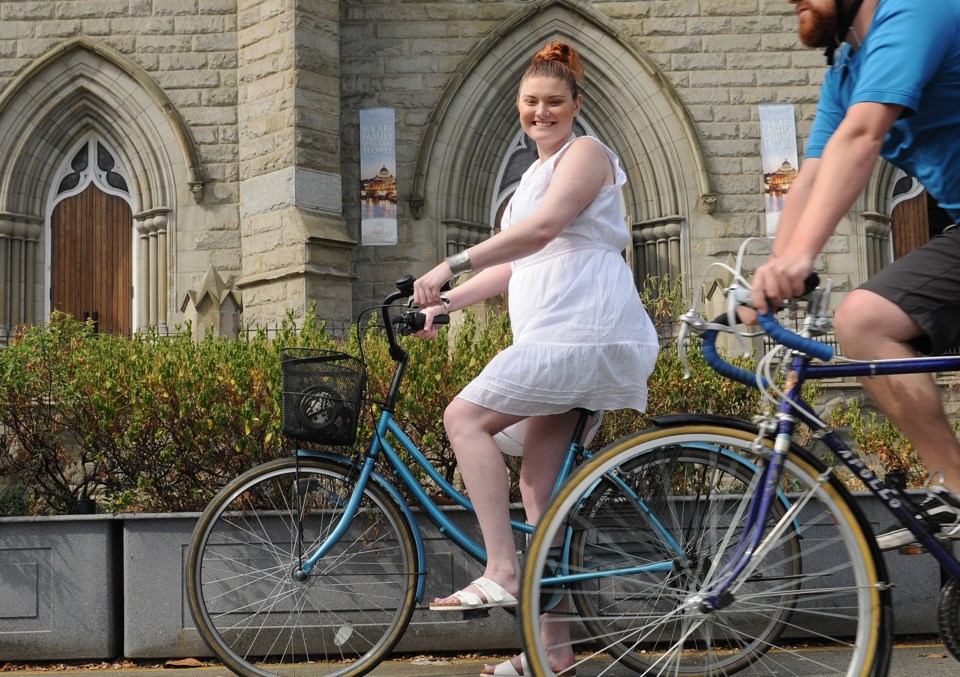“The feeling I get when riding is pure joy,” said Seron Mackay, a Vancouver nutritionist. “It's real freedom when the wind blows past and I have full control over my speed and maneuvers.”
Mackay’s response to cycling is the same for many women I have spoken to over the years.In cities around the world, the number of women who regularly ride a bike for transportation is steadily rising.
For two months, I have been commuting daily along the 10th Avenue Bikeway and know one thing is for certain: there is a visible increase in the number of ladies on bikes from when I first began riding regularly five years ago.
For some reason, though — likely for clicks more than fact — I often read articles claiming that trying to get more women cycling is an exercise in futility.
Be it helmet hair, the dreaded “S” word that dampens the brow, or having to go through the arduous task of changing into work attire at the office, the claims are always the same: most women are too vain to ride a bicycle for transportation. The Globe’s polarizing columnist Margaret Wente made one of the latest offending — and inaccurate — contributions in a July 8 column headlined “Where are all the female cyclists?”
Allow me put up my hand.
Also, these sweeping claims discredit efforts to improve gender equality and are more than a little insulting to women everywhere.
More to read: Bike stores foolish to ignore half of city's cyclists
The bicycle has long been a means for women (and all riders) to get from point A to B. In the late 1800’s, as Suffragettes started their campaigns for electoral equality, bikes played a role in invoking a sense of freedom. The “Safety Bicycle,” which included a chain drive, and the wheel size and frame shape of today’s bikes, became the tool that allowed them to break free from dependence on men for transportation. It also gave them a practical reason to wear pants. “Safeties could be ridden with ease and didn’t require a course in gymnastics,” wrote English author Bella Bathurst in 2011.
U.S. civil rights activist Susan B. Anthony famously wrote in 1896 that the bicycle “has done more to emancipate women than anything else in the world.” Those wheels afforded the rider “untrammelled womanhood,” she declared.
Still today, two-wheeled travel represents the power to take control of one’s mobility. When I get on my bike, the only limitations preventing me from getting where I want to go are how fast and far I’m willing to ride. If I need to arrive fresh-faced and ready for a meeting, I just give myself time and ride at a pace that leaves me no sweatier than if I had walked instead.
If we are truly interested in increasing female ridership in cities, then that’s the freedom we need to focus on.

Janna Gabrek gave up riding a bicycle after her teenage years. “I've never been a particularly athletic person and most of the people I saw riding were athletic men in full spandex outfits, which didn't exactly resonate with me,” she said.
Then earlier this month, wanting to join her partner and his son on recreational rides, she borrowed a Dutch-style bicycle from a friend. The 29-year-old pension analyst never expected how that first excursion would change the way she gets around.
“It felt fantastic to get on a bike, especially while wearing a dress. I realized on an upright bike that it wasn't about flying downhill at a hundred kilometers and hour or getting a good solid workout. It was genuinely a pleasant and easy means of getting to work,” she said.
We can too easily forget the emotional benefits of cycling. Instead, many focus on athleticism and sport instead of the sheer practicality of it. Riding a bike is easy, plain and simple. It is the great equalizer, one that can be done by a small child, a grandmother, and everyone in between.
Melissa Rodrigues is a Vancouver mother of two. Each day, she rides with her daughters, ages two and five, on the back of her electric-assist Yuba Boda Boda.
“We don't have a car so I used to mostly just walk or bus with the stroller,” she said. “Being able to ride with both my girls gives me much more ability to go farther distances and to get places faster.”
Mackay, Gabrek and Rodrigues don’t let vanity stop them from using their bicycles, and it is stories like these that provide encouragement for the bike-curious.
To say that the efforts of policy makers, governments and advocates to increase the mode share among women has been all for naught is to devalue all the hard work being done.
The ladies I see on the bikeways are not riding for sport. They’re riding casually, some dressed in regular clothes, the occasional woman in heels, and still others clearly opting to freshen up at the office. Either way, they are embracing the freedom and independence two-wheeled travel offers.
Especially for women, messaging must stop emphasizing perceived barriers and instead promote all the wonderful things riders can experience. Freedom, control, simplicity and pure joy.
Melissa Bruntlett is a co-founder of Modacity and is inspired to live a happy life of urban mobility. Reach her at [email protected].



